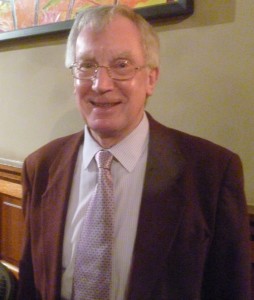Tuesday 23rd February Graham McLachlan on flight 4590 – 25th July 2000
An expert on aviation, Graham took us on a memorable and frightening journey, leading to a disaster. It is an indelible image, heavy with symbolism: the photograph taken on 25 July at the moment Concorde became a technological Icarus. The great white bird reared up over runway 26 at Charles de Gaulle, immediately after take off. Already mortally wounded, flames bled uncontrollably from beneath the left-hand wing. Less than two minutes later, the world’s only supersonic airliner dropped onto the Paris suburb of Gonesse, killing all 109 on board and another five on the ground.
In the aftermath of the crash, the official investigation into its causes focused almost entirely on the fire said Graham. According to the French accident investigation bureau, the BEA, it broke out when the plane passed over a strip of metal on the runway. A tyre burst; a chunk of rubber thudded into a fuel tank inside the wing; jet fuel poured out of a hole and ignited. The hot gases caused two of the engines to falter, and despite a valiant struggle by Captain Christian Marty, a daredevil skier who once crossed the Atlantic on a windsurf board, the loss of thrust made the crash inevitable. The facts, continued Graham, dispute this analysis of events.
This ‘single cause’ explanation is why the Civil Aviation Authority grounded British Airways’ seven Concordes three weeks after the disaster. Its chairman, Sir Malcolm Field, said: ‘ It is clear to all of us in the CAA that a tyre burst alone should never cause the loss of a public transport aircraft tyre debris alone is thought to have led to this catastrophic accident.’
According to the extensive research by Graham & other experts, the truth is much more complicated – and as far as Air France were concerned, far more worrying. In the words of John Hutchinson, a BA Concorde captain for 15 years at the time, the fire on its own should have been ’eminently survivable; the pilot should have been able to fly his way out of trouble’. The reason why he failed to do so, Hutchinson believes, was a lethal combination of operational error and ‘negligence’ by the maintenance department of Air France. This appears to have been a crash with more than one contributing factor, most of which were avoidable. Ex pilot, Len Houston gave a worthy vote of thanks.


